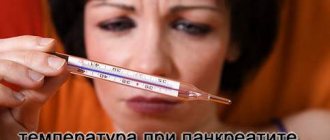Just as our eyes are compared to the mirror of the soul, human skin reflects the state of the entire body. Each disorder, mostly associated with the functioning of the gastrointestinal tract, is reflected on our skin in the form of rashes, ulcers and blisters. No matter how unpleasant these rashes are, they are of great benefit: they help identify diseases of the digestive system at the earliest stages of development.
Diseases of the pancreas, which can be identified by various manifestations on the skin, are no exception. This organ performs an important function in the digestion process, as it produces enzymes and hormones. Doctors consider the most common diseases of the pancreas to be pancreatitis and hepatitis of various types. With any disruption of the functionality of this organ, secretory changes occur in the body, which causes a change in the condition of the skin. Doctors consider this manifestation to be infrequent and nonspecific, but still, skin spots and rashes in diseases of the pancreas are of great importance for diagnosing these diseases.
The structure of the pancreas and its functions
The pancreas is an important functioning organ of the digestive system, 15 cm long. Without this gland, the digestion process itself becomes impossible.
This organ produces enzymes necessary for digestion. It also produces hormones that determine the normal functioning of the digestive and secretory systems. The mentioned enzymes enter the duodenum through special ducts, where food digestion begins. From anatomy lessons we remember that in the stomach the food bolus is subject only to mechanical and chemical processing. In addition, some elements are absorbed: sugar, water, etc. In the duodenum, under the action of pancreatic enzymes, proteins, fats and carbohydrates are broken down into the smallest components and absorbed through the villous walls of the intestine into the blood.
The most famous hormone secreted by the pancreas is the hormone insulin, which regulates blood sugar metabolism. Also an important hormone is somastin, which prevents the stomach from self-digesting when there is excess bile. Its deficiency leads to the development of ulcers.
Causes of the disease
- The most important factor influencing the occurrence of pancreatitis is alcohol abuse. In 50–70% of cases, inflammation of the pancreas develops due to regular consumption of beer and spirits (usually in young and middle-aged men).
- Spots on the body due to pancreatic disease often form in people with cholelithiasis (more often in women).
- Pancreatitis often develops in people after surgery on the stomach or other digestive organs.
Much less often, inflammation of the pancreas develops in the following cases:
- complication after viral infections;
- abdominal injuries, wounds, severe bruises;
- allergy;
- stomach or duodenal ulcer;
- poisoning with heavy metals, medications, odors of varnish or paints.
Diseases of the pancreas and their symptoms
A common disease of the pancreas is acute pancreatitis . The causes of the inflammatory process are usually diseases of the duodenum. The pancreas is located behind the stomach, close to the walls of the duodenum and connected to it, as already mentioned, by conducting ducts. Diseases of the intestine are often transmitted to the gland.
Alcohol abuse can also cause pancreatitis. The main symptom that indicates the need to urgently call a doctor is acute subcostal pain. Also, such a pain syndrome can also have a shingles nature.
If medical care is not provided in a timely manner, pancreatitis develops into a chronic form. Against this background, a person may develop obesity and diabetes.
Exposure to viruses can also cause various diseases of the pancreas. For example, viral hepatitis type A, B, C is the most common viral disease. Hepatitis is transmitted either through the fecal-oral route, such as hepatitis A, or through the blood, such as hepatitis B.
Read also:
Acne due to intestinal, stomach or liver problems
Signs of hepatitis do not stand out much from the list of symptoms of other diseases. This includes jaundice (yellowing and drying of the skin), fever, chills, etc. However, viral hepatitis of any type can not only become chronic, but also lead a person (in the absence of timely treatment) to a coma.
There are cases when viral hepatitis leads to the development of liver cirrhosis and dystrophy.
Unfortunately, pancreatic cancer is not among the rarest diseases. On the contrary, against the backdrop of a deteriorating environment, fast, unhealthy and harmful nutrition, tumors that are benign in nature (due to the lack of surgical intervention) quickly turn into a malignant form.
Diagnosing the disease is difficult because its symptoms appear late.
Possible violations
Pancreatitis is considered a common pancreatic disease. Starting with the acute stage, which occurs when the gland tissue begins to be digested by its own enzymes. If treated incorrectly, the disease becomes chronic.
The causes of this disease may be abdominal trauma, allergic reactions, blockage of blood vessels with blood clots, entry of bile or intestinal contents into the excretory ducts of the pancreas, etc. In addition, frequent overeating of fatty foods and alcohol abuse can serve as an impetus for the development of this disease.
Another pathology of the pancreas is no less common - diabetes mellitus, which occurs as a result of insufficient production of insulin by the pancreas.
Important. Also among diseases of this organ there may be parasitic lesions, various tumors and cystic formations, as well as the formation of stones.
Due to the inaccessibility of the pancreas for research, many diseases are quite difficult to diagnose. Skin manifestations of internal disorders can help with this.
We also recommend viewing: What is pancreatic lipomatosis and how to deal with it?
How do pancreatic diseases manifest on the skin?
The pancreas performs a number of external and internal secretory functions; disruptions in its functioning immediately affect the condition of the skin.
Skin spots
With exacerbation of pancreatitis, small bruises appear in the navel area, passing in the same way as a regular bruise. The skin on the abdomen becomes marble-colored. In the groin area, the spots may be blue-green. In rare cases, spots may appear on the thighs.
Skin spots
In addition, pancreatitis can cause hives. The appearance of urticaria rashes indicates a violation of the functionality of the pancreas - pancreatitis (acute or chronic) and even oncological tumors. Urticaria in diseases of the pancreas is flat nodules of blue-pink color. They are localized in different parts of the body - on the front of the lower leg, back, buttocks. After 10-14 days, the nodules resolve, and in their place small depressions appear, reminiscent of pigment spots.
Elongated spots on the skin along the veins indicate thrombophlebitis. And it, in turn, can be one of the symptoms of pancreatic cancer. The most common places for thrombophlebitis spots to be localized are the neck, chest area, abdomen and buttocks. After some time, watery blisters appear at the site of the spots, which turn into erosions and then become covered with crusts. Over time, the crusts go away, and in their place there remain ring-shaped lesions, in which itching sensations appear, as well as mild pain and burning.
Atopic dermatitis
Atopic dermatitis is often called eczema. These two concepts mean the same thing, the only difference is that in Europe it is customary for doctors to call these rashes eczema, and in the USA - atopic dermatitis. However, atopic dermatitis is expressed by quite severe inflammatory swelling and rashes in the form of blisters. Clinically, dermatitis is manifested by a fairly clearly defined erythema, which makes itself felt due to severe itching.
The primary signs of dermatitis appear as blisters, sometimes spots and plaques. Secondary signs are expressed by crusts and scales that form at the site of burst blisters. With the rapid development of pancreatic diseases, the affected areas increase in size.
Symptom of red droplets
Tuzhilin's symptom (syndrome)
A common symptom in diseases of the pancreas is Tuzhilin's symptom (syndrome). Bright red “droplets” (their correct name is “vascular aneurysms”) of a regular round shape most often occur in diseases, for example, chronic pancreatitis. Mostly aneurysms are located on the back, abdomen, and quite rarely on the patient’s chest.
Read also:
Liver palms
The intensity of the red dots depends on the degree of exacerbation of the disease. The development of “droplets”, their noticeable increase and an increase in the number of aneurysms per square decimeter of skin, indicates the rapid development of the disease. In the opposite case - about the slow attenuation of the pathology.
Change in skin color
When the pancreas malfunctions, spots of different colors appear on the patient’s skin - icteric, cyanotic, and bloodless. The patient's skin becomes too pale.
Bluish spots are especially dangerous, because they are a symptom of the most acute stage of pancreatitis. The appearance of symptoms of cyanosis (blue discoloration of the epithelium) on the abdomen, most often to the right of the navel and in the chest area should cause alarm and you should immediately consult a doctor.
Too pale skin indicates severe intoxication of the body.
Almost a third of all people with pancreatitis develop a disease called “jaundice.” The color of the integumentary cover changes to yellow. This occurs due to the enzyme trypsin being released into the blood, which destroys liver cells. Also, yellowing of the skin is possible when the bile ducts are compressed.
Jaundice or pale skin can also be a symptom of pancreatic cancer.
Appearance of itching
Spots on the skin due to diseases of the pancreas are accompanied by itching sensations. Severe itching can accompany the appearance of bright rashes on the skin, for example, dermatitis, which has already been mentioned. Also, itching can act as a separate symptom and warn of the development of type 1 diabetes.
Along with itching during the development of this disease, excessive urination occurs against the background of constant thirst. The patient also begins to experience ketoacidosis (characteristic odor of acetone from the mouth, nausea, etc.) and hypoglycemia (fainting, severe sweating).
If you have all of these symptoms, you should definitely consult a doctor who can prescribe tests to identify problems with the digestive system.
What are Tuzhilin spots?
Many patients with pancreatitis often begin to develop red droplets all over their body, but why does this happen? Gastroenterologists explain their formation as an exacerbation of chronic pancreatitis.
Red dots begin to appear on the patient’s body with pancreatitis in different places, affecting the back, abdomen and chest.
Sometimes spots may appear in the neck, arms and legs. They represent the formation of vascular aneurysms that occur during acute dysfunction of the pancreas, the functionality of which lies in the production of special hormonal and enzymatic substances that are of no small importance for the external state of the epidermis.
In some cases, Tuzhilin spots may occur against the background of individual intolerance to certain groups of medications prescribed to normalize the performance of an organ affected by pancreatic disease.
Laboratory diagnosis of diseases
For a more accurate diagnosis, it is necessary to take tests: blood and urine, possibly feces. Blood is usually donated to determine the ratio of leukocytes and red blood cells.
As you know, in the normal state of the body, the blood should contain 5 million red blood cells per mm cubic, 300 thousand platelets per mm cubic, and only 4-9 thousand leukocytes per mm cubic. Leukocytes are responsible for the protective function of the body, therefore, an increase indicates the beginning of an inflammatory and purulent process.
With the development of pancreatitis and a number of other diseases of the pancreas, the blood thickens due to dehydration, the number of red blood cells also decreases due to lack of oxygen (anemia when respiratory disorders occur) and hemoglobin decreases accordingly. At the same time, a person’s blood sugar increases.
The level of amylase and other enzymes in the blood can be detected using biochemistry.
Urine and stool tests can also detect various diseases. Firstly, the density of urine increases, and secondly, it contains proteins, leukocytes and red blood cells that should not be there.
Read also:
Tuzhilin syndrome - a symptom of red droplets
To confirm the diagnosis, patients are prescribed a radiological ultrasound examination.
What rashes are observed with pancreatitis?
Toxins are evacuated from the body through the skin. The inflammatory process provokes degenerative changes in the tissues of the pancreas. Gradually, infected tissues rot, resulting in the formation of toxins that are absorbed into the blood from the liver and intestines.
They are then excreted through the skin. With an excessive amount of toxins, the dermis does not fully cope with its excretory function, and comedones, papules and pustules appear on the skin.
Treatment of skin spots caused by pancreatic dysfunction
Regardless of the disease of the pancreas, their treatment involves taking certain medications. If spots appear on the skin, you should make sure that this is not an allergy to one of the components of the medication. To get rid of rashes, you should determine which medicine is causing the allergic reaction and replace it.
To reduce the intensity of the spots and reduce painful and itchy sensations, you should consult a doctor. He will conduct an external examination and take some samples of biomaterial for analysis.
NO to alcohol!
The therapeutic course that the doctor will prescribe will depend on the cause of the spots. The most commonly prescribed courses of therapy are:
- spots on the skin caused by allergies to medications are eliminated with the help of antihistamines that block the receptors that are responsible for the allergic reaction;
- if the cause of skin spots is bile acids that have entered the blood, then drugs are prescribed that remove toxins and prevent their effects on the human body.
Discomfort in the area of skin spots associated with pancreatic disease is eliminated with the help of general therapy for the disease. Treatment of any disease should be carried out under the supervision of an experienced specialist.
When undergoing a course of treatment, it is necessary to follow a diet, excluding from the diet foods that cause exacerbation of pancreatitis.
Diabetes
There are two types of diabetes. In the first case, autoimmune processes are observed, in which the body begins to fight itself. In the second case, the cause of the disease is most often poor nutrition and lifestyle. Diabetes mellitus is an insidious disease characterized by a large number of symptoms, including skin rash.
In general, as the disease develops, the skin becomes rough, dry and begins to actively peel off. Some people get spots on their bodies, others get pimples on their faces. The rash on the body may be accompanied by itching and burning. Skin color also changes. The spots take on a red, brown or bluish tint.
It is impossible to diagnose diabetes mellitus by rashes alone; there must be other signs, in particular, a feeling of thirst and frequent urination
The rash is predominantly localized on the extremities, although it can spread throughout the body. The fact that spots mainly appear on the legs is explained by the fact that they are further from the heart and therefore do not receive enough energy and nutrients.
In addition, hair begins to fall out and become dull. With diffuse baldness, one may suspect the development of complications or the ineffectiveness of the treatment.
Acanthokeratoderma
If the sensitivity of cells to insulin is impaired, a disease appears in which the skin in the folds thickens and darkens. These spots look like warts. They are usually located under the breasts, groin or armpits. In some diabetics, such spots can also be found on the fingers.
Vitiligo
Another companion to diabetes is vitiligo. Such skin lesions usually appear in type 1 diabetes. As a result of the pathological process, the skin loses the pigment responsible for its color. This causes white spots to appear on the body. The face, stomach and arms are most affected.
Milk spots on the skin in the initial stage do not exceed two to three millimeters in diameter. They have clear boundaries. When the spots merge with each other, contours with uneven boundaries are formed. Treatment includes the use of adrenal hormones and micropigmentation.
Sunbathing is contraindicated for patients. When going outside on sunny days, you should apply sunscreen cream, because getting a sunburn will make the situation even worse.
With vitiligo, white or milky spots appear
Diabetic scleroderma
As a rule, it occurs in non-insulin-dependent diabetes. The skin on the back of the neck and upper back thickens. Treatment involves controlling blood sugar levels. Lotions with urea and moisturizers will help soften the skin a little.
Diet for diseases of the digestive system
Proper nutrition is the key to successful recovery.
The diet that must be followed is aimed at reducing gastric secretion and reducing the risk of complications and pathologies. The following foods should be excluded from the patient’s diet:
- easily digestible carbohydrates and sugars;
- meat broths;
- pork and lamb;
- canned food;
- smoked meats and sausages;
- strong tea, caffeine, cocoa and chocolate;
- all fatty and fried foods;
- Fresh vegetables and fruits cannot be eaten - they must be boiled or stewed;
- baked goods and fresh baked goods;
- spices and herbs.
This list is supplemented at the discretion of the doctor and depending on the stage of the disease. Eat food in small portions, more than 5–6 times a day.
Tuzhilin's symptom: causes of formation and treatment of red droplets on the body
Pathologies of the digestive system, including inflammation of the pancreas, affect the functioning of many systems. Dysfunction and inflammation of the pancreas can be recognized by various symptoms, one of them is characteristic skin rashes. In medicine, such a side effect is called Tuzhilin syndrome; more details about the causes of its occurrence and treatment methods are below.
Tuzhilin's syndrome or symptom is the formation of so-called “red droplets” on the patient’s body. Reddish spots are manifestations of a vascular aneurysm. This is how small capillaries on the stomach and chest react to inflammation of the pancreas.
The stage and form of the disease are determined by the intensity of their color and quantity. If the inflammatory process worsens, Tuzhilin's spots become brighter and their number increases.
During the remission stage, when inflammation subsides, skin rashes decrease and may disappear completely.
Red dots with pancreatitis are vascular aneurysms. Characteristic features of such rashes that make it possible to differentiate them from manifestations of pathologies of other organs:
- When pressed, the “droplets” do not cause pain, but in severe pancreatitis they can itch and cause discomfort.
- They have a round shape, come in different diameters and sizes, protrude noticeably above the surface of the skin or can be almost flat.
- A rash with pancreatitis usually appears on the abdomen, chest or back; less often, characteristic signs of problems with the pancreas are found on the face or limbs.
Information! Red drop-shaped rashes appear in healthy people after abuse of fatty, spicy, salty foods, and alcohol. This is a signal from the body: the pancreas is overloaded.
The skin becomes covered with Tuzhilin spots in cases of pancreatitis in a severe, aggravated form. A similar symptom occurs in other diseases: cardiovascular or allergic.
The easiest way to differentiate acute inflammation of the pancreas is to press on the spot. The droplet will not turn pale or change shape.
But this symptom is not enough to confirm the diagnosis; additional tests and examinations will be required.
What to do if you find yourself
Is any treatment required for Tuzhilin's symptom? The rashes themselves do not affect the course of the disease, but are only a manifestation of its various stages. In most cases, red dots do not cause pain. But with a large number of them, patients, especially females, may experience moral discomfort.
What needs to be done if the patient himself notices new red rashes on the body or they are discovered during an examination by a doctor:
- First of all, rule out allergies to medications to maintain pancreatic function. If the problem is an allergic reaction, then you should immediately stop taking all medications and create a new treatment regimen.
- If the red rashes are the result of an allergy, the doctor will prescribe antihistamines to ease the symptoms and reduce itching.
- If the rash is a sign of excess bile in the body of a patient suffering from pancreatitis, a course of medications is necessary to cleanse the blood and remove toxins.
Since the root cause of this phenomenon is pancreatitis, increased attention must be paid to its treatment and prevention. The doctor reviews the treatment regimen used and adjusts it, even if there are no visible signs of exacerbation of the disease, with the exception of Tuzhilin’s symptom. As the inflammation is eliminated, the red dots will disappear.
Diet plays an important role in the treatment of Tuzhilin syndrome, since violation of the therapeutic diet becomes in most cases the cause of exacerbation of pancreatitis.
The main goal of dietary nutrition to reduce the manifestations of the syndrome is to reduce the amount of gastric secretion.
For this purpose, the following dishes and products are completely excluded from the patient’s menu for several weeks:
- Carbohydrates and sugar.
- Fatty meats and strong broths made from it.
- Any canned food, sausages and smoked meats.
- Bakery products, including homemade baked goods.
- Fried foods.
- Spices and hot seasonings.
- Alcohol in any quantity and type.
You need to eat small meals up to six times a day.
We recommend reading: Symptoms of Helicobacter on the skin.
Treatment of pancreatic rashes
The therapeutic course is aimed at getting rid of the symptoms of pancreatic disease. It starts with following a diet. The doctor then prescribes medication, which can sometimes be supplemented with alternative medicine prescriptions.
Diet features
Pathology of the pancreas requires an early change in diet.
In the first days, fasting treatment is necessary to relieve the diseased organ. The patient drinks only clean water. Then table No. 5p is prescribed, which is strictly adhered to for at least 3 months. Its basic principles are:
- minimum number of meals - 6 times;
- small portion sizes are required;
- both hot and extremely cold dishes are prohibited;
- For cooking, the guideline is a small list of permitted products.
The main task of a strict diet is to prevent the production of enzymes and hydrochloric acid, which aggravate the condition of the diseased gland. Among the provocateurs:
- fats, carbonated, alcoholic drinks;
- coffee, strong tea and cocoa, juices (even freshly squeezed, with the exception of pumpkin);
- pickles, smoked meats, dried fish and meat, all canned food;
- spicy vegetables, legumes, seasonings, mayonnaise, ketchup, other store-bought sauces;
- baked goods, fresh bread, cakes, chocolate, nuts;
- sour or sweet fruits, white cabbage.
Pharmacy products
The course of treatment for the pancreas depends on the symptoms of the disease, on the cause that caused the spots or rashes to appear.
- if intoxication is suspected in their occurrence, then drugs are prescribed that evacuate toxins and stop their destructive effect on the body (Enterosgel, Polysorb);
- if the spots or rashes are of an allergic nature, antihistamines are prescribed that reduce sensitivity to irritating substances (Tavegil, Zyrtec);
- for severely disturbing itching, it is often recommended to take glucocorticoids, which reduce its intensity and help eliminate allergic reactions (Prednisolone, Hydrocortisone);
- when pancreatitis is caused by disturbances in the functioning of the biliary system, the prescription of drugs with ursodeoxycholic acid (Ursosan, Ursofalk) is justified.
Traditional methods
Herbal treatment is possible when a doctor's approval is obtained. This therapy for pancreatic diseases is still an additional method. The following infusions and decoctions are used to treat pancreatitis.
- Mix flax and marsh cudweed (40 g each) in equal proportions, add 20 g of marsh calamus root and 10 g of celandine. Fill with boiling water and leave the mixture for 2 hours. Drink 2-3 tablespoons shortly before meals (about 10 minutes) three times daily.
- Add 40 g of licorice to 20 g of barberry bark and mix. At 3 tbsp. l. of the resulting raw material, you need to take ½ liter of water. The mixture is poured with boiling water, left for at least 12 hours, then boiled for another 5 minutes. Take the decoction in exactly the same volume as in the previous recipe, but half an hour before meals.
- Take 40 g of peppermint, valerian root, knotweed, add bean leaves (10 g), grind everything in a coffee grinder. 2 tbsp. l. pour ½ liter of boiling water, after 2 hours of infusion, drink the medicine 10 minutes before meals. The required course is up to 45 days.
Even if skin rashes are observed against the background of inflammation of the pancreas, the attending physician determines methods of therapy and prescribes medications only on the basis of laboratory tests of the patient and diagnosis of his acne. Primary therapeutic measures are always aimed at reducing pain and stopping the inflammatory process in the pancreas.
In the future, if the appearance of a rash is correlated with a high level of bile, the doctor may prescribe medications that accelerate and facilitate the evacuation of toxins from the body.
If the cause of acne is allergic reactions, blocking antihistamines may be used to reduce the sensitivity of receptors to allergens.
The entire treatment course is carried out with strict adherence to a special diet - table No. 5.
Just as our eyes are compared to the mirror of the soul, human skin reflects the state of the entire body. Each disorder, mostly associated with the functioning of the gastrointestinal tract, is reflected on our skin in the form of rashes, ulcers and blisters. No matter how unpleasant these rashes are, they are of great benefit: they help identify diseases of the digestive system at the earliest stages of development.
Diseases of the pancreas, which can be identified by various manifestations on the skin, are no exception. This organ performs an important function in the digestion process, as it produces enzymes and hormones. Doctors consider the most common diseases of the pancreas to be pancreatitis and hepatitis of various types.
With any disruption of the functionality of this organ, secretory changes occur in the body, which causes a change in the condition of the skin. Doctors consider this manifestation to be infrequent and nonspecific, but still, skin spots and rashes in diseases of the pancreas are of great importance for diagnosing these diseases.
To reduce the number of spots, burning and scratching of skin lesions, consultation with a specialist is necessary.
The consultation is accompanied by an external examination and some laboratory tests.
Depending on the identified cause of spots and rashes, doctors prescribe the following courses of treatment:
- if the spots are caused by an allergy to medications, antihistamines should be prescribed that block the receptors responsible for the manifestations of allergies;
- if skin rashes are caused by bile acids entering the bloodstream, medications should prevent the toxic effects of the acids and ultimately ensure their intoxication;
It is important to exclude foods that provoke attacks of pancreatitis and cause its exacerbation (smoked, spicy, salty foods, carbonated and alcoholic drinks).
Among other things, itching and many spots on the skin of patients associated with diseases of the pancreas suggest general therapy for the disease, which should be carried out under the constant supervision of a specialist.
Have you already thought about surgery? This is understandable, because the liver is a very important organ, and its proper functioning is the key to health and well-being. Nausea and vomiting, yellowish or grayish skin tone, bitter taste in the mouth, dark urine and diarrhea. All these symptoms are familiar to you firsthand.
Doctors tend to believe that the only way to hope for a cure for pancreatic cancer is treatment by surgical resection.
After surgery, you must undergo 6 courses of chemotherapy with gemzar or fluorouracil.
A pancreatic tumor at stages 2 and 3 is characterized by the growth of the tumor beyond the organ, the spread of cancer into the vessels, surrounding tissues and nerves, and damage to the lymph nodes. Most often, such tumors are no longer resectable.
Only in some cases (when there is no growth of the tumor into the nerves and great vessels) can gastropancreaticoduodenal resection be performed. After this, the patient is prescribed chemotherapy with gemzar.
First-line drugs include gemcitabine, and you can also give the patient a combination of gemzar and tarceva. The second line is treatment regimens that include treatment with oxaliplatin, irinotecan, fluorouracil/xelods, and cisplatin.
The effectiveness of first-line drugs is much higher.










